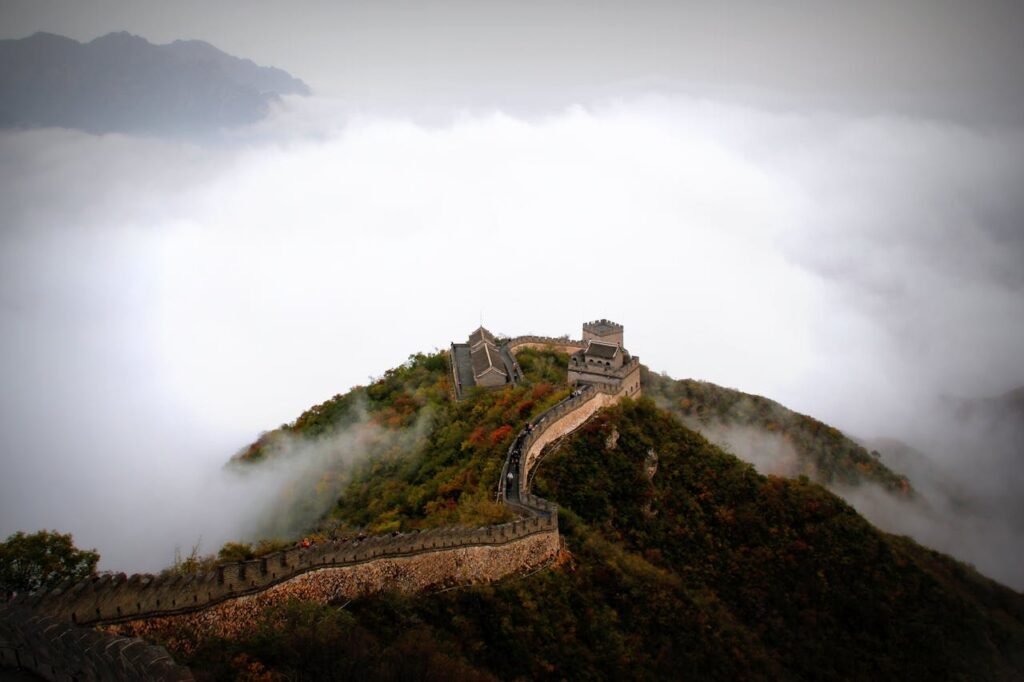The Great Wall of China, an architectural marvel stretching over 13,000 miles, is one of the most iconic landmarks in the world. Built over several dynasties, it stands as a testament to China’s rich history and the ingenuity of ancient engineering. As you walk along its winding path, you are not just traversing stone and brick but also journeying through centuries of history that have shaped this monumental structure.
Starting from its easternmost point at Shanhaiguan, where the Wall meets the sea, to the desert landscapes in the west at Jiayuguan, the Great Wall offers diverse landscapes and experiences. Some sections, like Badaling and Mutianyu, are well-preserved and accessible, providing a glimpse into the Wall’s grandeur during its prime. Meanwhile, the more rugged and unrestored sections, such as Simatai and Jinshanling, allow adventurers to experience the Wall in its raw, natural state, where the stones whisper tales of ancient battles and lost civilizations.
Exploring the Great Wall isn’t just about marveling at its size and structure; it’s about understanding the historical context in which it was built. Originally conceived by Emperor Qin Shi Huang in the 3rd century BC to protect against invasions, the Wall evolved over millennia, reflecting the changing priorities and challenges of successive dynasties. The wall, initially made of tamped earth, was later reinforced with brick and stone, particularly during the Ming Dynasty, which saw the Wall extended and fortified to fend off Mongol invasions.
For many visitors, walking along the Great Wall is an emotional and almost spiritual experience. The sense of history is palpable; every stone has witnessed centuries of warfare, political change, and cultural evolution. As you ascend its steep steps and gaze at the rolling hills and valleys below, it’s easy to imagine the thousands of soldiers who once stood guard, defending the empire against invaders. The Wall wasn’t just a physical barrier but also a psychological one, symbolizing the might and unity of the Chinese civilization.
The Great Wall is not a single, continuous structure but rather a series of walls and fortifications built by different Chinese states over centuries. This distinction adds layers of complexity and interest to the Wall’s history. Some sections were built parallel to each other, others to consolidate territory, and some even intersect, demonstrating the strategic importance of this defense system. The Wall also features watchtowers, garrison stations, and signaling capabilities, with the towers serving as lookout points and storage for weapons, while smoke signals communicated imminent threats.
Visiting the Great Wall is an adventure that varies depending on which section you choose to explore. The Badaling section, closest to Beijing, is the most popular among tourists due to its proximity and accessibility. It’s well-preserved, making it easier to walk, but it can get crowded, especially during peak tourist seasons. For a more peaceful experience, the Mutianyu section is an excellent choice. It’s slightly less crowded and offers stunning views of the surrounding mountains. The Simatai section, known for its steepness and the fact that it’s partially illuminated at night, provides a more challenging hike and is perfect for those looking for an off-the-beaten-path experience.
Beyond its physical grandeur, the Great Wall also holds a deep cultural significance. It has inspired countless legends, poems, and songs in Chinese culture. For example, the story of Meng Jiangnu, a woman whose tears caused a section of the Wall to collapse, is a poignant tale that underscores the human cost of building such a monumental structure.
Whether you visit during the lush green summers, the vibrant autumns, or the snow-covered winters, the Great Wall of China remains an awe-inspiring monument to human endurance and ambition. It’s more than just a wall; it’s a symbol of the enduring strength and resilience of a civilization that has stood the test of time.

